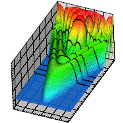Department of Physics and Astronomy: Publications and Other Research

Anthony F. Starace Publications
Document Type
Article
Date of this Version
3-16-2015
Citation
Published in Journal of Physics B: Atomic, Molecular and Optical Physics 48 (2015) 075202; doi:10.1088/0953-4075/48/7/075202 (15pp).
Since IOP does not permit deposit of their PDF version, archived here is the version, dated Feb. 5, 2015 (v.2) from arXiv.org at http://arxiv.org/abs/1501.01263v2
Abstract
Rescattering effects in non-resonant spontaneous laser-assisted electron–atom bremsstrahlung (LABrS) are analyzed within the framework of time-dependent effective-range (TDER) theory. It is shown that high energy LABrS spectra exhibit rescattering plateau structures that are similar to those that are well-known in strong field laser-induced processes as well as those that have been predicted theoretically in laser-assisted collision processes. In the limit of a low-frequency laser field, an analytic description of LABrS is obtained from a rigorous quantum analysis of the exact TDER results for the LABrS amplitude. This amplitude is represented as a sum of factorized terms involving three factors, each having a clear physical meaning. The first two factors are the exact field-free amplitudes for electron–atom bremsstrahlung and for electron– atom scattering, and the third factor describes free electron motion in the laser field along a closed trajectory between the first (scattering) and second (rescattering) collision events. Finally, an extension of these TDER results to the case of LABrS in a Coulomb field is discussed.
Included in
Atomic, Molecular and Optical Physics Commons, Elementary Particles and Fields and String Theory Commons, Plasma and Beam Physics Commons


Comments
Copyright © 2015 IOP Publishing Ltd.